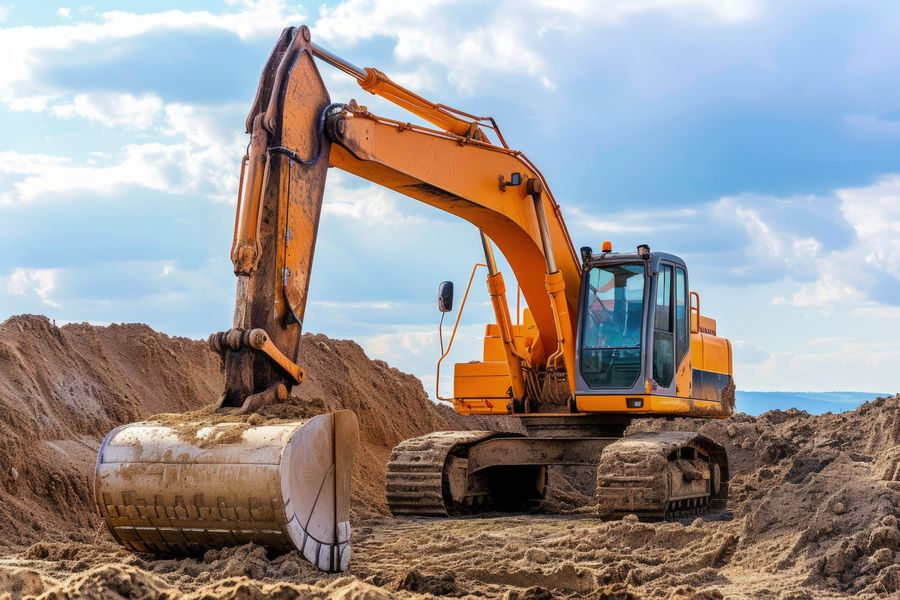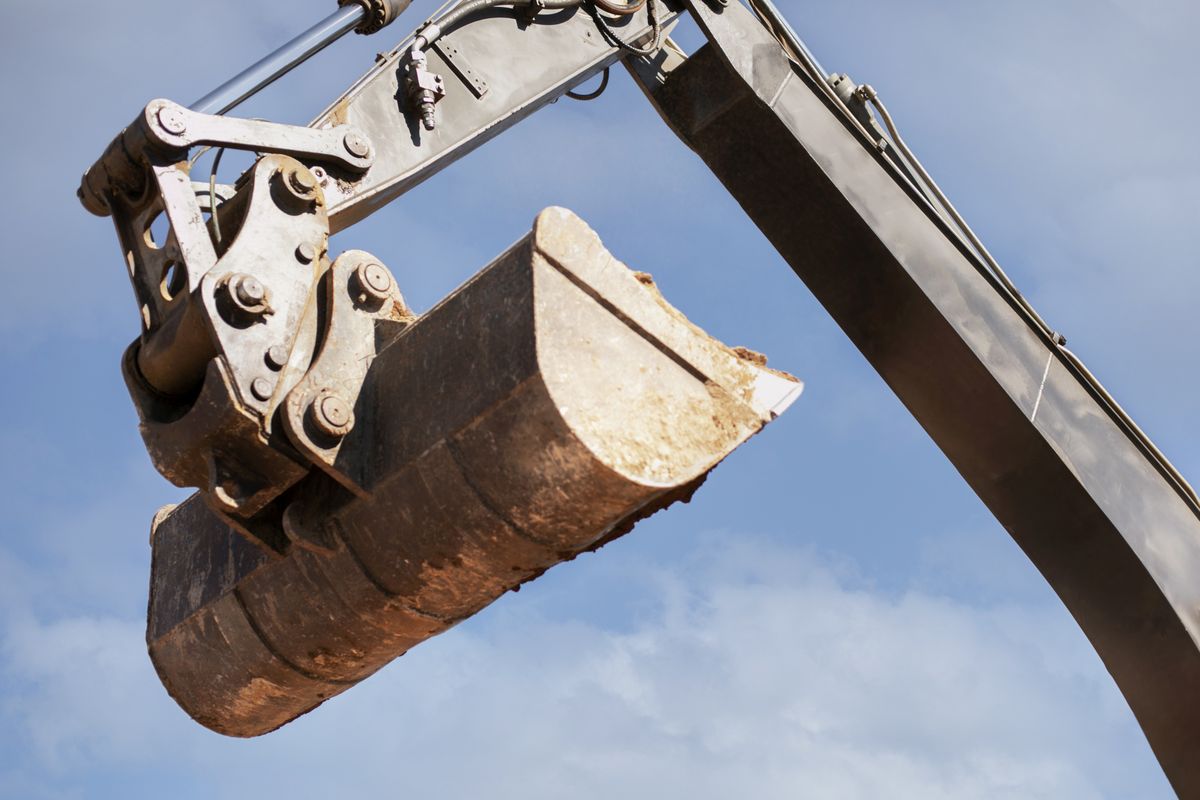Electromagnets are key components of modern mobile hydraulics. Find out here which innovations are now driving mechanical engineering and OEMs.

Modern electromagnet solutions for mobile hydraulics


Marco Kiene
Management | CSO
Quicklinks
- Electromagnets in mobile hydraulics
- How electromagnets work in hydraulics
- Advantages of electromagnets in mobile hydraulics
- In which areas of mobile hydraulics are solenoids used?
- Increasing demands on the functionality and robustness of electromagnets
- Current trends 2024/2025 for electromagnets in mobile hydraulics
- Cross-industry: electrification, emissions targets and sustainability
- Greater integration, miniaturisation and extended functionality
- Increasing demands on functionality and robustness
Electromagnets in mobile hydraulics

Mobile hydraulics is a major area of application for electromagnets. Here, the solenoid is used in excavators, cranes, agricultural machinery and rollers, for example. The industry places high demands on the technical components - high robustness and fast movements with high dynamics combined with a long service life play a major role here.
In this article, we will take a detailed look at how electromagnets work in mobile hydraulics and analyse the advantages of this technology.
How electromagnets work in hydraulics
The function of electromagnets in mobile hydraulics is based on the generation of an electromagnetic field. The magnetic field then generates mechanical work, which results in a linear movement.
When the electromagnet is used in a hydraulic application, it is used to control moving components. The moving component to be controlled is usually a valve. The armature in the solenoid generates the movement and controls the valve.
There are different types of solenoids that can be used in mobile hydraulics. Some of them are:
- Switching solenoids: Switching solenoids are used to open or close a valve. They are simple in design and can be easily integrated into existing hydraulic systems.
- Proportional solenoids : Proportional solenoids are able to control the movement of a valve in proportion to the applied current. They offer greater accuracy than switching solenoids and are therefore more suitable for applications that require precise control.
The selection of the correct solenoid type depends on the specific application and should be carefully considered to ensure that the requirements are met.
Advantages of electromagnets in mobile hydraulics
The main advantages include the robust design and low sensitivity to all types of emissions (dirt, temperature, vibrations, etc.).
Another advantage of electromagnets is their controllability. They can realise precise, fast movements with high dynamics, which makes them ideal for applications in mobile hydraulics.
Furthermore, electromagnets can achieve very high forces, which is required in mobile hydraulics in cranes and excavators, for example.
Further advantages of electromagnets:
- Low technical complexity compared to an electromotive solution
- Simple electrical control
- Wide operating temperature range
- Small number of moving parts
- Long service life and no maintenance required
- High protection classes and explosion-proof products
In which areas of mobile hydraulics are solenoids used?
Electromagnets play an important role in hydraulics, primarily at the interface between the electrical control system and the power medium for the operation of a wide range of machines. They are therefore used in many mobile hydraulics applications to enable the movement and control of hydraulic systems. Here are a few examples:
- Excavators and cranes: Electromagnets are used in excavators and cranes to control the hydraulic grabs and buckets. Solenoids can also be used to control the support legs and other moving parts.
- Agriculture and forestry: Electromagnets are used in agricultural machinery such as tractors and combine harvesters to control the movement of attachments such as ploughs and mowers. They can also be used to control hydraulic trailers and other moving parts.
- Construction machinery: Electromagnets are also used in various types of construction machinery to control the movement of hydraulic cylinders, slides and valves. They can also be used to control hydraulic brakes and clutches.
- Commercial vehicles: In commercial vehicles such as lorries and buses, solenoids are used to control hydraulic systems such as steering, brakes and clutches. They can also be used to control hydraulic trailers and other moving parts.
Overall, electromagnets play an important role in mobile hydraulics as they provide a precise and efficient way to control the movement and steering of hydraulic systems.
Increasing demands on the functionality and robustness of electromagnets
Despite all the technological advances, classic requirements still apply: high switching force, long service life and maximum robustness against vibrations, moisture and temperature. Electromagnets used in mobile hydraulics must reliably fulfil these properties, even in a compact design. Solutions that offer high degrees of protection (e.g. IP69K), ATEX conformity or E1 approvals are particularly in demand.
It is therefore worthwhile for manufacturers of mobile machines to rely on high-performance partners with comprehensive development expertise. Highly specialised components - customised on request and with state-of-the-art solenoid and coil technology - often open up completely new scope for designing efficient and sustainable hydraulic systems.
Current trends 2024/2025 for electromagnets in mobile hydraulics
Clear development trends have also emerged in the field of mobile hydraulics in recent years. Building on the established strengths of solenoids - precise valve control, high dynamics and robustness - new technological and market-driven trends are influencing the requirements placed on hydraulic systems. Digitalisation and increased efficiency are seen as key drivers, while sustainability and energy saving are often increasingly coming into focus at the same time. Below, we provide a brief overview of the most relevant trends that characterise the use of electromagnets in mobile hydraulics.
Cross-industry: electrification, emissions targets and sustainability
The increasing electrification of mobile machinery - for example in construction, agriculture or logistics - requires a rethink in the design of hydraulic control components. In future, it must often be possible to seamlessly integrate electromagnets into battery-powered electric systems and help to further reduce energy requirements.
In addition, stricter emission regulations, for example as part of the EU off-highway directives or ESG specifications, require a sustainable overall view of the systems. Electromagnets with a long service life, maintenance-free operation and environmentally friendly materials help to improve the ecological balance - not only in operation, but also in the life cycle.
Greater integration, miniaturisation and extended functionality
In modern mobile machines, the available installation space is often very limited. Compact designs with high power density are therefore a key requirement. Electromagnets that combine several functions in one component - such as position detection and valve control - make an important contribution to system integration.
In addition, the demand for proportional technology that allows smooth and precise movements is increasing. Intelligent control systems with feedback interfaces (e.g. CAN, IO-Link) are increasingly turning solenoid valves into mechatronic systems with independent diagnostic and control logic. Hybrid solutions with electronic pilot control are also increasingly being implemented.
Increasing demands on functionality and robustness
Despite all the technological advances, classic requirements still apply: high switching force, long service life and maximum robustness against vibrations, moisture and temperature. Electromagnets used in mobile hydraulics must reliably fulfil these properties, even in a compact design. Solutions that offer high degrees of protection (e.g. IP69K), ATEX conformity or E1 approvals are particularly in demand.
It is therefore worthwhile for manufacturers of mobile machines to rely on high-performance partners with comprehensive development expertise. Highly specialised components - customised on request and with state-of-the-art solenoid and coil technology - allow individual solutions for your company.

